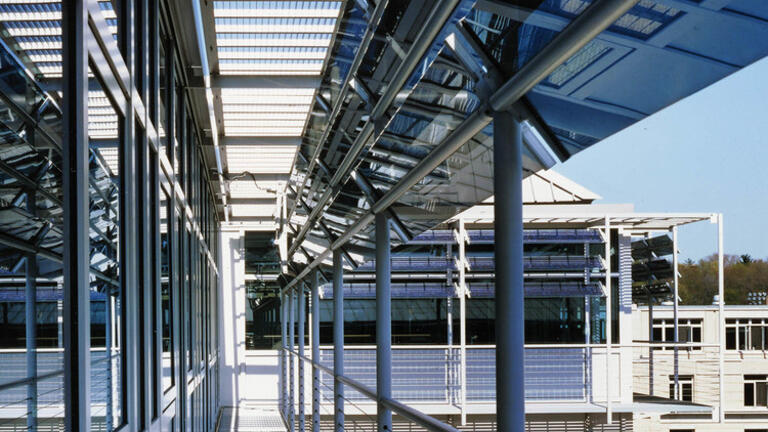Environmental Performance Simulation
This course introduces fundamental knowledge in building physics in relation to a variety of environmentally responsive building design principles and incorporates computational approaches to increase resiliency for human habitability while minimizing reliance on mechanical systems.

Robert L. Preger Intelligent Workplace. © Karl Backus
"Design of a boat is optimized for sail-driven locomotion. Buildings should be able to sail using free energy of wind, air, sun and internal heat sources to temper indoor environment." Based on Brendon Lewitt's viewpoint, this course introduces fundamental knowledge in building physics in relation to a variety of environmentally responsive building design principles. It also incorporates computational approaches to increase resiliency for human habitability while minimizing reliance on mechanical systems.
The course refreshes essential building physics concepts, such as building thermodynamics (heat and mass transfer mechanisms), photometric quantification of light and luminous environment, human visual and thermal comfort (psychrometric), thermal modeling and the principles of generating electricity from sunlight (photoelectric effect). The course emphasizes understanding, analyzing and simulating these underlying thermodynamic principles and processes to provide immediate or in-depth quantitative feedback for informed exploration of various design alternatives.
The course highlights a range of environmental design concepts, prioritizing evidence-driven techniques and examining real-world building examples. Emphasis is placed on incorporating diverse environmental design tactics into the initial phases of high-performance architecture. Furthermore, the course introduces cutting-edge tools, methods and techniques for architectural design and environmentally-focused study, utilizing the Rhino-Grasshopper-Climate Studio program ecosystem for algorithmic and parametric modeling. Students are provided with established computational workflows that can be easily adapted and expanded upon in future design.